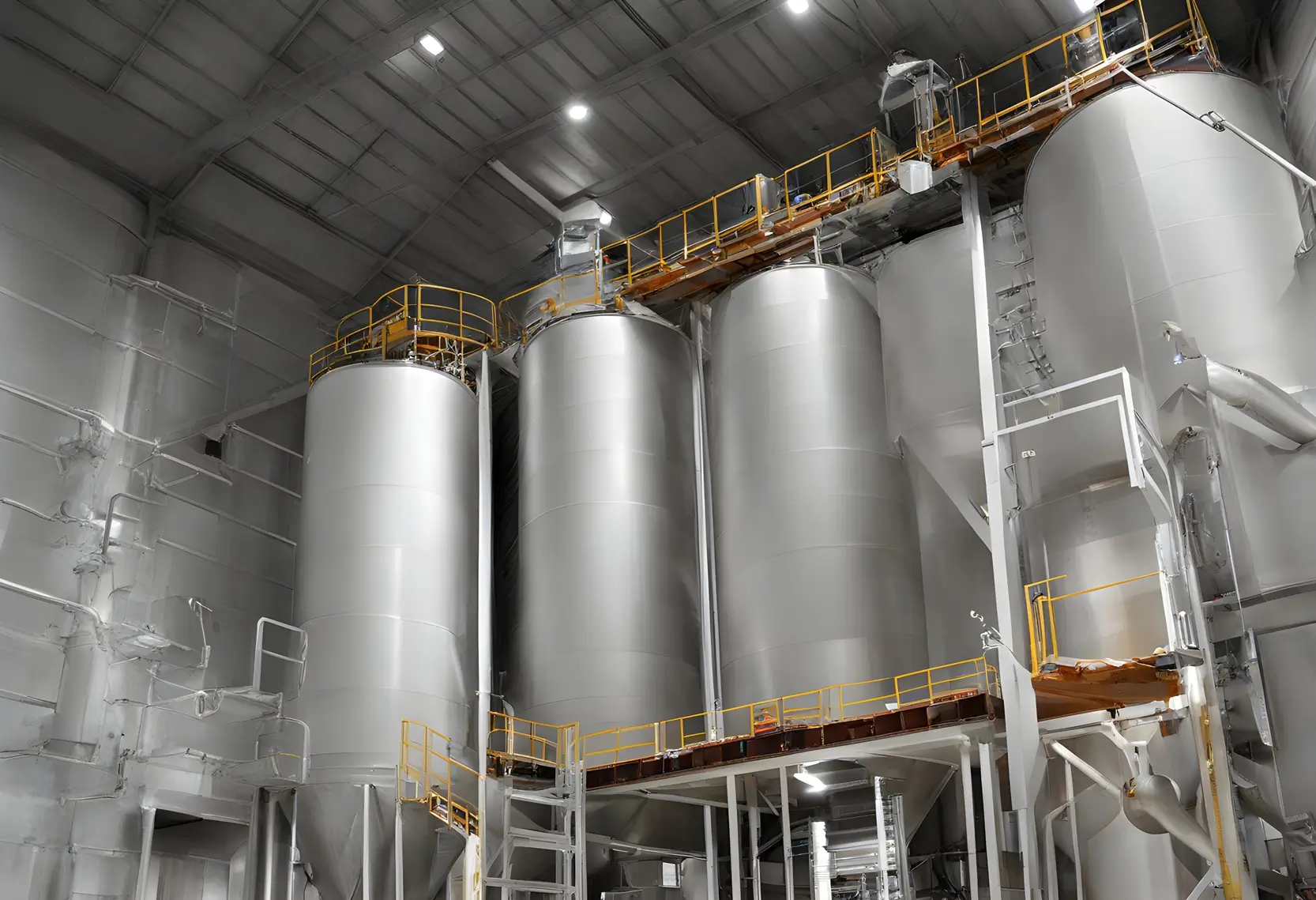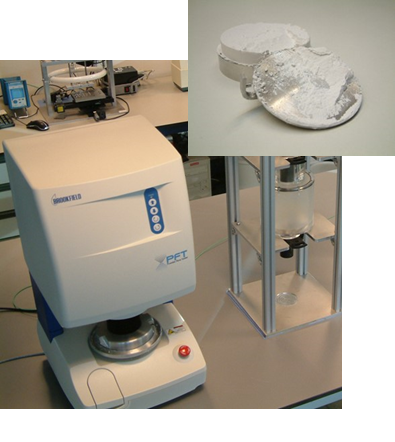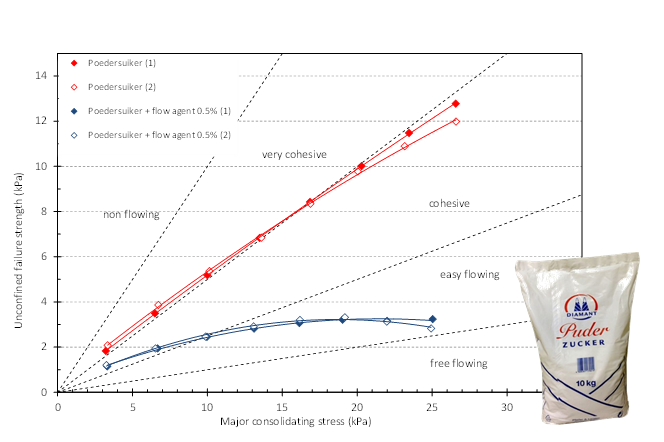Bulk powder characterization – During the Silo Day seminar held earlier this year in Zandvliet (Belgium), a range of possible measurement techniques were presented, to investigate whether a bulk material is suitable for storage in silos. Based on a thorough investigation of the material it can be determined what conditions a storage facility must meet to extract the material smoothly from the silo. The short overview given below is a representative extraction of this presentation. Bulk powder characterization and flow properties Flow function Silo design Segregation Bulk powder characterization and Wear Dustiness
Flow properties of powders in silos depend on environmental factors and the properties of the powder. An important feature of the powder is the particle size. In the same silo, 100 micrometers-sized aluminum oxide particles will be able to flow easily, while alumina particles of 50 micrometers bridge formation occurs at the outflow. This product bridge is so stable that the outflow stagnates. The reason for this behavior is that the smaller particles have a greater cohesion so that they are no longer free-flowing. To improve the flow behavior, one can add a “flowing agent” to the cohesive powder. This is an inert, very fine powder which after mixing distributes the aluminum oxide particles. The fine powder serves as a lubricant (“ball bearings”), so that the material still flows. A content of a few tenths of a percent in the flowing agent is already sufficient to improve the flow behavior of the product considerably.
The flow behavior of powders can also be more quantitatively mapped and may even be predicted by determining the shearing forces by means of a shear stress test. Here, the friction in the powder is measured at different consolidation pressures, corresponding to the situation in the silo. From these measurements, a flow function can then be constructed. Chart 1 shows examples of the flow function for powdered sugar. This product is strongly cohesive in its pure form. After adding a flowing agent the flowability changes drastically. The poorly flowing powder has become easy-flowing and accordingly will show a massive different behavior when used in a silo.
In the design stages of a production process, there can be given a great deal of thought to the most optimal geometry of a storage silo as well as explore the best construction material that can be used for the silo (such as polymer, steel, or aluminum). During various analyses of the bulk material, one can, for example, in addition to the bulk density, measure the wall friction in the silo. This approach leads to a silo design in which the outlet opening and hopper angle are fully adapted to the particular bulk material so that a smooth flow is guaranteed. Incidentally, the above mentioned analyses are also carried out in order to examine problems within an operational system in order to provide solutions.
Through the process of storing and disseminating powder, mixtures can start to segregate, thus a loss of quality may occur. The cause of segregation is that e.g. large and small particles (size), light and heavy particles (density) and particles with dissimilar shapes behave differently during the manipulation of the mixture. Segregation occurs strongest with free-flowing products. There are several research methods that can provide insight into how a particular product is sensitive to a particular type of segregation. Some of the techniques that can be used herein, are “fluidisation” (the blowing in of air to the underside of a container with powder) and ‘sifting’ (the deflation of a hopper). This research makes it possible – preferably at the earliest possible stage – to intervene in the formulation of the mixture. However, one can also take measures afterward to make the product less prone to segregation. However, one can for instance add (liquid) additives to make the product more cohesive.

Particles are exposed to various forces during a production process, which might damage the particles. The sharp edges of particles may crumble into smaller pieces (attrition), but particles can also change shape by sanding along a wall (abrasion) and thus suffer degradation. Oddly shaped particles become usually rounder but can also completely break. There is plenty of commercial equipment on the market to investigate the breaking behavior of particles of 5 mm and larger (such as extrudates and tablets), but the situation is different when it comes to particles of a few millimeters or even smaller than a millimeter. Delft Solids Solutions in Wateringen however, has a Robotic Compression Tester in development that can analyze and quantify the elastic and plastic deformation and ultimate tensile strength (hardness) of smaller particles. In addition, it has a technique to investigate the wear behavior of particles in bulk (Bulk Crushing Strength). Here, the particles in a packed bed are subject to different forces, wherein the changing product properties are simulated and measured.
When particles are subjected to wear it is common for the dust to form, which is usually an equally undesirable phenomenon as the intrinsic presence of dust in the product. There are various methods of measurement, which, in accordance with European directives, quantify the dustiness of products. This may even be the translation to a potential risk to health, safety, and the environment. To this end, the substance is released and collected in specially-designed filters that mimic the respiratory tract. It is then possible to determine the inhalable fraction, the thoracic fraction, and the respirable fraction. The release of this so-called airborne dust occurs in a rotating drum (simulating the handling of the product), or by controlled dropping of the product (simulation of the release of a product).




